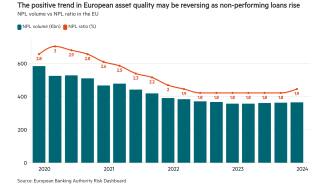"This is a product that has been traditionally placed among retail investors in Spain, but it is a new product for the institutional investor market," says Pedro Urresti, JP Morgan's capital markets director for Spain and Portugal. "The reason this product hasn't been launched until now is that cédulas hipotecarias have to be denominated in domestic currency. "In the past, the Spanish peseta market was very narrow, and the institutional investor base was relatively small, so there was not much demand. Now, with the euro, the domestic currency for bond issuance, Spain can tap the entire euro market. Every financial institution in Spain holding a mortgage portfolio is going to consider this product."
Carlos López Jall, debt capital markets director at Salomon Smith Barney, says there was a major change in Spanish legislation at the beginning of this year regarding tax treatment for institutional investors. "Bonds listed domestically no longer attract a 25 per cent withholding tax for domestic institutional investors," he says. "To some extent this was done to protect the domestic market and encourage companies to issue domestically. As a result, there has been a big increase in issurance in the senior debt market by big corporates such as Endesa and Telefónica, which are issuing domestic bonds in euros."











